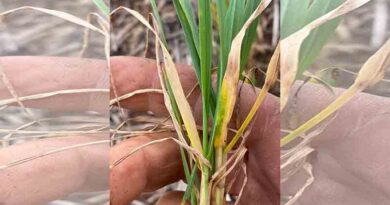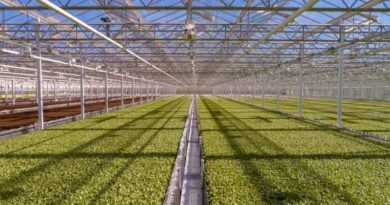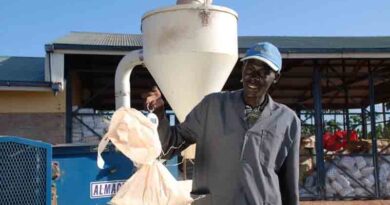GRDC Northern Updates offer strategies to manage inevitable disease pressure
23 January 2023, AU: For the 2023 growing season, managing the inevitably high disease pressure will be all about controlling the controllable says renowned disease expert, Steven Simpfendorfer.
Dr Simpfendorfer, Senior Plant Pathologist for the NSW Department of Primary Industries (NSW DPI), will be presenting on cereal disease risk and management at this year’s Northern Update Series during February and March, hosted by the Grains Research and Development Corporation (GRDC).
He said disease has been a major concern for growers coming out of last year’s extremely conducive conditions, which saw high levels of stripe rust pressure in wheat crops and the widespread occurrence of white grain disorder or Fusarium Head Blight infection.
“We’re going into the season this year with a high potential for carry over of cereal pathogens,” he said.
“There’s a lot of grain on the ground, which unless it dries up dramatically, will support a significant green bridge for early stripe rust infections in 2023 wheat crops.
We’re also potentially looking at a drier spring – which is conducive conditions for expression of Fusarium crown rot as white heads which can cause considerable yield loss.
For early stripe rust intervention, Dr Simpfendorfer said growers should look at varietal selection, consider using Flutriafol on starter fertiliser in susceptible varieties and be prepared to apply an early fungicide application to support seedlings if another early epidemic occurs in 2023.
To help control Fusarium crown rot inoculum, which has been building up in soils over multiple seasons, growers need to be implementing multiple control measures like testing soils, stubble and seed for disease presence and making informed decisions based off results.
“Growers will need to be doing what they can to manage Fusarium crown rot now – they need to be considering their grain quality and what they retained in the way of seed. If they retained seed from any crop where they noted pink or white grain at harvest, they need to get it tested straight away,” Dr Simpfendorfer said.
“If tests show Fusarium grain infection levels between 1-5 per cent, then seed treatments could be used to reduce the risk of seedling death. Anything over that, then growers should be looking to use a cleaner seed.
“There’s no money in resowing.”
Dr Simpfendorfer said growers should also be considering using tests like Predicta- B to test their soils and stubble for levels of Fusarium crown rot inoculum to make more informed planting decisions based on results.
“This is particularly important in paddocks where they noticed white grains in harvested seed in 2022. At present our data shows that over 70% of the Fusarium head blight in 2022 was related to basal infections from Fusarium crown rot,” he said.
“Fusarium crown rot inoculum levels have been building up largely unnoticed in paddocks over the last three wetter seasons, so growers should be finding out where their risk is at and implementing strategies based off that.
“If they’re aware of what levels of crown rot inoculum they have on farm, they can make smart choices to reduce potential impacts.
“For example, if a paddock shows moderate to high levels of crown rot inoculum, growers could ideally plant a non-host break crop (e.g. chickpea, faba bean or canola). Or, if they’re still considering growing a cereal crop then they know durum is off the table and could opt to plant a more tolerant bread wheat or barley variety.”
During the Updates, Dr Simpfendorfer will discuss the 2022 growing season, how ongoing wet and mild conditions changed disease management and how growers could expect this to be dramatically different if predictions of a drier and warmer spring come to fruition.
“The thing I’ll be warning growers about this season is that they need to keep the circumstances of 2022 in perspective,” he said.
“The ongoing wet conditions northern growers experienced last year and a prolonged grain fill period supported high yields.
“While it was a high disease pressure season that in some cases, required multiple fungicide applications, the strong production still allowed most growers to generate a profit.
“This year, if we get the predicted drier and warmer spring, yields will come back and every dollar spent on the crop could be growers’ profit margin.
“That’s why early intervention and making good management decisions now is so important.”
GRDC Northern Grower Relations Manager, Graeme Sandral, said this year’s Northern Update Series will be packed with seasonal information that will assist growers in making informed, timely decisions to get the most out of their crops.
“We have developed a regionally specific agenda that aims to help growers manage risk and capitalise on opportunities,” he said.
“These events provide an ideal forum for learning, sharing ideas and networking, all of which are precursors to successful and effective improvements at a farm level.”
The GRDC Update Series will kick off with a two day event in Wagga Wagga on Tuesday, February 14 and Wednesday February 15.
Also Read: Millets & Organics -2023: Three-day International Trade Fair starts at Thripuravasini, Bengaluru
(For Latest Agriculture News & Updates, follow Krishak Jagat on Google News)















